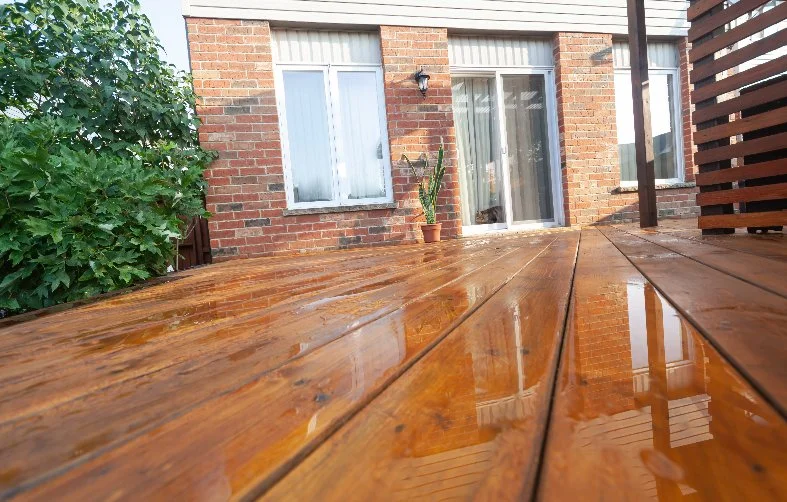Stay Dry: Ways to Protect Your Home From a Wet Climate
A wet climate can be challenging when it comes to maintaining our homes. From rainfall to high humidity levels, excess moisture can lead to a wide range of problems such as mold growth, rotting wood, and structural damage. Therefore, it's crucial to take proactive measures to protect our homes from the effects of a wet climate. In this guide, we will discuss some practical ways to keep your home dry and protected. Let's get started!
Drain Things Properly
It's essential to make sure that your gutters, downspouts, and drainage systems are in good working condition. These components play a crucial role in directing water away from your home's foundation and preventing waterlogging around the perimeter of your property. Clogged or damaged gutters can cause rainwater to overflow onto the roof and seep into the walls, resulting in water damage and mold growth. Regularly inspect and clean your gutters to ensure proper drainage. Additionally, consider extending your downspouts away from the foundation to prevent water from pooling near your home.
Seal Cracks and Gaps
In a wet climate, even the tiniest of cracks and gaps can lead to significant problems. Rainwater can easily seep through these openings and find its way into your home, causing damage and creating ideal conditions for mold growth. It's essential to regularly inspect your home for any cracks or gaps in the walls, foundation, windows, doors, and roof. Seal any openings with caulk or weatherstripping to prevent water from entering your home. This simple yet effective measure can go a long way in keeping your home dry and protected.
There are several products available in the market that can effectively seal cracks and gaps and waterproof your home. These include silicone caulks, polyurethane foam sealants, Acrylic Coatings, and rubberized asphalt coatings. Silicone caulks are ideal for sealing small cracks and gaps around windows and doors, while polyurethane foam sealants can be used to fill larger openings in walls or roofs. Rubberized asphalt coatings are excellent for waterproofing foundations and basements, creating a protective barrier against water intrusion. When choosing a product, make sure to read the label and select one that is suitable for your specific needs and climate.
Waterproof Your Basement
Basements are highly susceptible to moisture due to their location below ground level. If not properly waterproofed, they can become a breeding ground for mold and mildew. To protect your basement from moisture, consider installing a sump pump to remove excess water and applying waterproof coatings on the walls and floors. Additionally, make sure that the grading around your home slopes away from the foundation to prevent water from seeping into the basement.
Maintain Your Roof
Your roof is the first line of defense against rainwater, and it's essential to keep it in good condition to prevent water from entering your home. Regularly inspect your roof for any signs of damage or wear and tear, such as missing shingles, cracks, or leaks. Address these issues promptly to avoid potential water damage inside your home. Additionally, consider applying a water-resistant coating on your roof to provide an extra layer of protection.
If you're not comfortable with inspecting and maintaining your roof yourself, it's best to call a professional roofing contractor. They have the expertise and tools to identify any issues and provide solutions to keep your roof in good condition. Regular maintenance by a professional can also extend the lifespan of your roof and save you from costly repairs down the line. Make sure to do research and choose a reputable and experienced contractor to ensure the best results.
Use Dehumidifiers
When living in a wet climate, high humidity levels can be a constant struggle. Excess moisture in the air can lead to mold growth and create a musty smell inside our homes. To combat this, consider using dehumidifiers in areas prone to moisture, such as basements, bathrooms, and laundry rooms. These devices can help remove excess moisture from the air, keeping your home dry and mold-free.
Ventilate Properly
Proper ventilation is crucial in a wet climate to prevent excess moisture from building up inside our homes. Make sure that your home has adequate ventilation, especially in areas prone to humidity, such as bathrooms and kitchens. Consider installing exhaust fans or opening windows when cooking or showering to allow steam and moisture to escape. Additionally, regularly check your attic for proper ventilation to prevent mold growth and ensure the longevity of your roof.
Use Mold-Resistant Products
In a wet climate, it's essential to be mindful of the products we use in our homes. Using mold-resistant materials, such as drywall and paint, can significantly reduce the risk of mold growth in your home. Additionally, consider using moisture-resistant insulation and flooring materials. These simple yet effective measures can go a long way in protecting your home from excess moisture and potential mold growth.
When trying to protect your home from a wet climate, it's also essential to be aware of products that can contribute to moisture buildup and mold growth. For example, using vinyl wallpaper or carpet in areas prone to humidity can trap moisture and create an ideal environment for mold to grow. Additionally, avoid storing damp or wet items in dark and confined spaces, as they can also promote mold growth. Be mindful of the products you bring into your home and choose materials that are moisture-resistant to avoid potential problems.
A wet climate can be a challenge when it comes to protecting our homes. However, by following these practical tips and taking proactive measures, we can keep our homes dry and protected from the effects of excess moisture. From maintaining proper drainage to using mold-resistant products, every step counts in ensuring the longevity and safety of our homes in a wet climate. Remember to regularly inspect and maintain your home to prevent any potential water damage or mold growth. Stay dry, stay safe!


